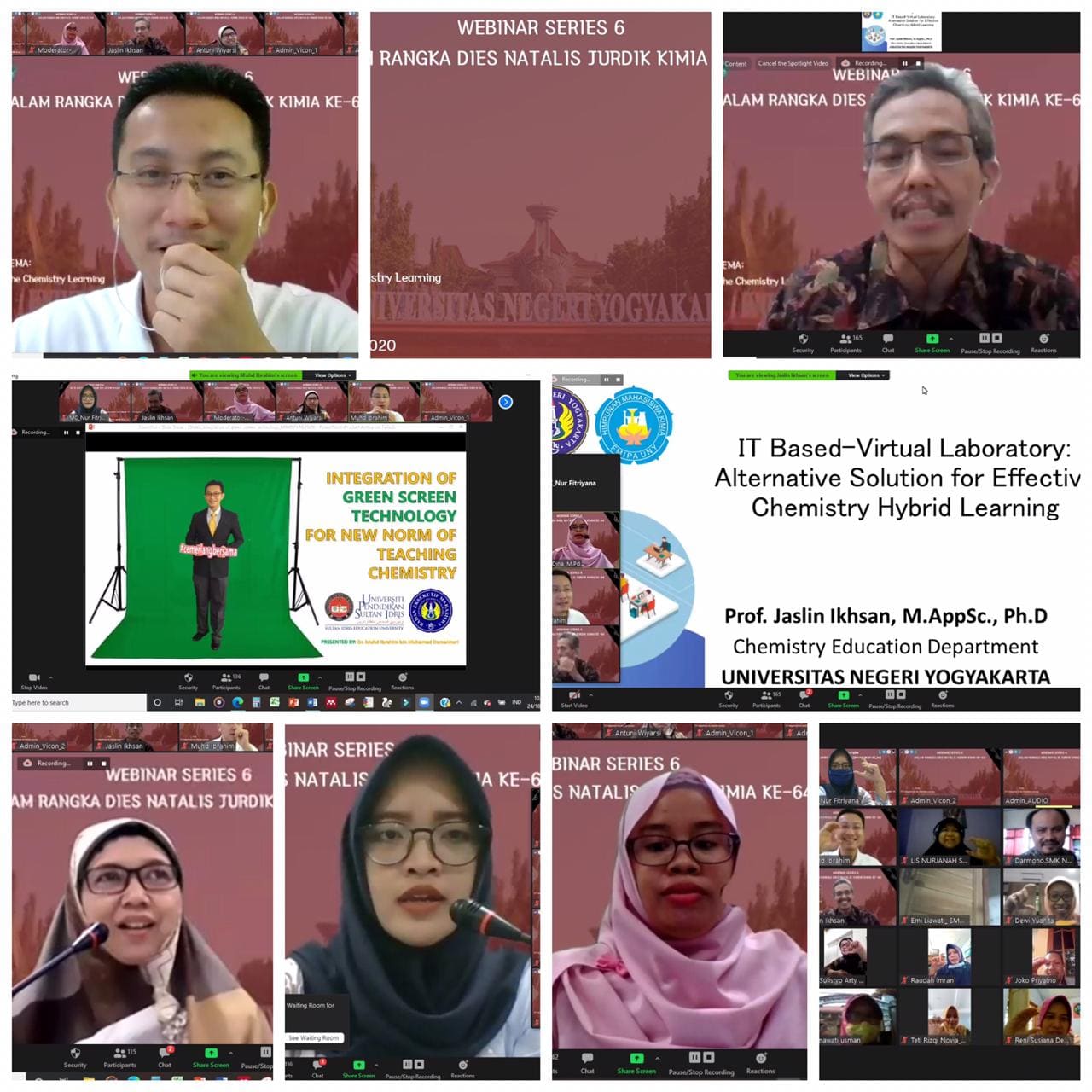You are here
WEBINAR SERIES #6 ICT INTEGRATION IN THE CHEMISTRY LEARNING

Webinar series # 6 with the theme ICT Integration in Chemistry Learning, which is the last webinar as a series of events commemorating the 64th anniversary of the chemistry education department, Yogyakarta State University. The speaker for this series 6 webinar is Dr. Muhd Ibrahim Muhamad Damanhuri from Sultan Idris Education University, Malaysia and Prof. Jaslin Ikhsan, Ph.D. from Yogyakarta State University. This webinar series 6 will be held on October 24, 2020.
Dr. Ibrahim explained the material about the Integration of Green Screen Technology for New Norms in Chemistry Learning. The use of green screen technology makes online learning more enjoyable, enhances demonstrations or instructions from an experiment in the lab, details important information, etc. Some of the factors that must be considered and affect the quality of green screen technology are lighting, background surface, camera, color of clothes, background color, and ability to edit. Several ways to apply green screen technology can be done through the OBS studio, smartphone applications, video conferencing, and the logitech C922 webcam.
The material presentation was continued by Prof. Jaslin who focuses on using virtual laboratory media as an alternative solution for effective chemical hybrid learning. Prof. Jaslin emphasized that the demands of 21st century learning make the development of technology-based teaching materials, for example in the form of apk, video, IoT, etc. These teaching materials can bridge the interactivity of online learning activities, especially in the era of the COVID-19 pandemic. The results have shown that the results of online learning are the same as face-to-face learning in class when viewed from students' cognitive abilities, motivation, and self-regulated learning. One of the delivery systems that can be used in chemistry learning that must be done online, especially in practicum activities, is to use a virtual lab. The use of virtual labs is an alternative solution for practicum learning because it can save budget, can be repeated many times, and is flexible. The use of virtual labs can also be combined with virtual reality which can then develop creativity and bridge the gap between teachers and students. At the end of the presentation of material, Prof. Jaslin advised the participants to continue to try to explore any potential, especially those that are useful in the field of education so that they are not out of date.
Information System
Kontak Kami
Program Studi Kimia
FMIPA Universitas Negeri Yogyakarta
Kampus Karangmalang Yogyakarta 55281
Telp. (0274)586168 Pes. 115
Email: kimia@uny.ac.id atau s1kimia@uny.ac.id
Copyright © 2026,
